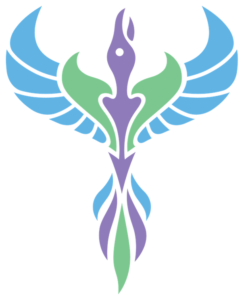Posts Tagged ‘headaches’
Getting the Right Night’s Sleep
When attempting to sleep, most of us follow the same adage: put yourself in the most comfortable position. Unfortunately, not all sleeping postures ar made equal and spending a night in a bad position can lead to poor circulation, neck and back pain, increased tension and headaches. Furthermore, a healthy nights sleep encompasses a whole range of conditions that need to be just right to get you the full refresh.
Improving your sleep conditions could mean chucking out your old, unsupportive mattress and upgrading your pillows, but this is not a financial option for everyone. Here are ways you can immediately improve your sleeping posture to start waking up refreshed rather than refried:
1. Try to avoid sleeping on your stomach. If you must, use a pillow under the stomach to avoid letting your stomach sink into the bed. Changing your sleep position is difficult, as it won’t feel natural at first, but given enough time, you can start sleeping on your side or back with no problems.
2. Use pillows properly: your head should not be resting with your neck cricked up or down. This is a great way to wake up with a stiff neck and a headache. Instead, your pillow should support your head while allowing it to remain parallel with the rest of the spine. Pillows can also be used as props: if you sleep on your back, stick one underneath your knees. You can even use pillows to help you stay in the same sleeping position by propping them behind you or on your sides to prevent you from rolling onto your back in the night.
3. Bed time should be a ritual: treat it as such. Cut out the electronics before bed, as they can suppress melatonin production. Instead, have a bath or wash your face. Gentle stretching is another a great thing to do before bed. A spoon of honey in a sleepytime tea is a great way to relax.
If bad sleep patterns have wrapped a vice around your life, call our office in Brooklyn to get the help you need to fall asleep. Acupuncture and chiropractic are both great at helping you relax, and we can have a serious discussion about what your posture, nutrition and exercise habits that could be holding you back from a restful night’s sleep.
We can be reached at our office in Brooklyn at (718) 398-3100.
Dr. Karen Thomas, D.C.
An alternative approach to managing migraines
Migraines are a bully: the pain they cause is destructive and there is no shortage of studies linking the chronic migraine sufferer with depression and lower quality of life. Though the physiological cause is unknown, there is a standard process: at the beginning, oxygen-rich blood flowing to the brain is restricted creating tertiary symptoms such as tingling or sensory sensitivity. When oxygen is inhibited, neurotransmitters are released, causing rebound dilation: blood vessels expand and blood flow is increased. This over dilation causes the intense, throbbing pain that is associated with migraines.
Acupuncture needling generally involves insertion and manipulation of thin needles in specific points to promote blood flow through the tissues in a process known as axon reflex. Because migraine pain is linked to the dilation of blood vessels in the head, creating this effect through needling could exacerbate symptoms. Therefore, we take a different approach when treating someone in the throes of migraine pain.
Acupoints in the head, neck, and to a certain extent, the upper body, are to be avoided. In order to avoid promoting increased blood circulation in the head, we focus on points in the lower body, including the arms and legs. Furthermore, as needling is usually done in a prone position, we treat the migraine sufferer in a recumbent position, to allow their body to exert greater control over blood vessel dilation. If deemed appropriate, an electrical current can be attached to the needles to help with constricting vasodilation.
Traditional Chinese Medicine has been used in the treatment of headaches for thousands of years. At Community Chiropractic and Acupuncture in Brooklyn, our treatment is gentle and non-invasive and there are very few side effects in comparison to pharmaceutical and over the counter drugs. Acupuncture is not a cure-all in the quest to conquer migraine pain; it is, however, another tool that can be used to lessen the hold of migraines on your daily life and improve your overall well-being. Call our office in Park Slope today at (718) 398-3100 if you are interested in learning how acupuncture can be used to manage your migraine pain.
Dr. Karen Thomas, D.C. L.Ac.

